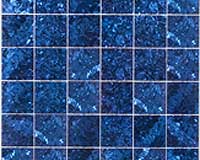 |
Toronto, Canada (SPX) Aug 06, 2010 One of the most promising technologies for making inexpensive but reasonably efficient solar photovoltaic cells just got much cheaper. Scientists at the University of Toronto in Canada have shown that inexpensive nickel can work just as well as gold for one of the critical electrical contacts that gather the electrical current produced by their colloidal quantum dot solar cells. The change to nickel can reduce the cell's already low material costs by 40 to 80 percent, says Lukasz Brzozowski, the director of the Photovoltaics Research Program in Professor Ted Sargent's group. They present their research in the July 12, 2010 issue of Applied Physics Letters, which is published by the American Institute of Physics (AIP). Quantum dots are nanoscale bits of a semiconductor material that are created using low-cost, high-throughput chemical reactions in liquid solutions. Since their properties vary according to their size, quantum dots can be made to match the illumination spectrum. Half of all sunlight, for example, is in the infrared wavelengths, most of which cannot be collected by silicon-based solar cells. Sargent's group has pioneered the design and development of quantum dot solar cells that gather both visible and infrared light. They have reached a power-conversion efficiency as high as 5 percent and aim to improve that to 10 percent before commercialization. At first, nickel did not appear to do the job. "It was intermixing with our quantum dots, forming a compound that blocked the current flow from the device," says Dr. Ratan Debnath, first author on the group's paper. Adding just one nanometer of lithium fluoride between the nickel and the dots created a barrier that stopped the contamination, and the cell's efficiency jumped back up to the expected level. This is the latest of several recent solar-cell milestones by the Canadian researchers. "We have been able to increase dramatically the efficiency of our photovoltaics over the last several years and continue to hold the performance world records," Professor Sargent said.
Share This Article With Planet Earth
Related Links American Institute of Physics All About Solar Energy at SolarDaily.com
 Selenium Makes More Efficient Solar Cells
Selenium Makes More Efficient Solar CellsCollege Park MD (SPX) Aug 06, 2010 Call it the anti-sunscreen. That's more or less the description of what many solar energy researchers would like to find - light-catching substances that could be added to photovoltaic materials in order to convert more of the sun's energy into carbon-free electricity. Research reported in the journal Applied Physics Letters, published by the American Institute of Physics (AIP), describes ... read more |
|
| The content herein, unless otherwise known to be public domain, are Copyright 1995-2010 - SpaceDaily. AFP and UPI Wire Stories are copyright Agence France-Presse and United Press International. ESA Portal Reports are copyright European Space Agency. All NASA sourced material is public domain. Additional copyrights may apply in whole or part to other bona fide parties. Advertising does not imply endorsement,agreement or approval of any opinions, statements or information provided by SpaceDaily on any Web page published or hosted by SpaceDaily. Privacy Statement |